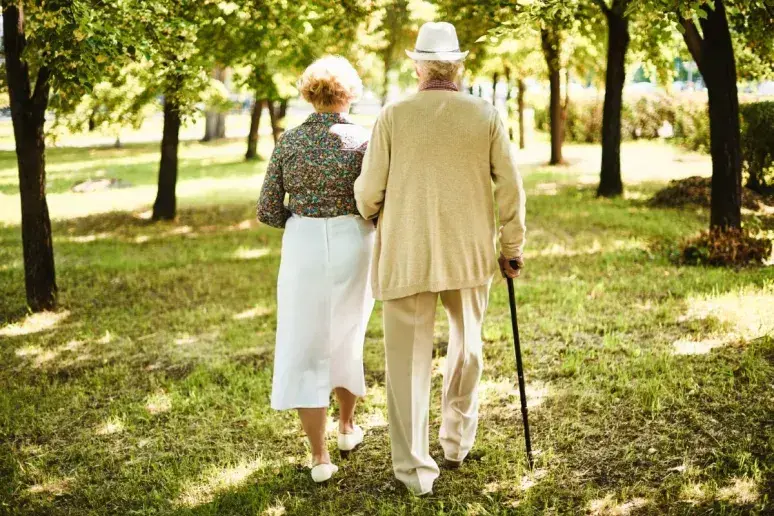
Brain activity could predict fall risk in older adults
Measuring brain activity could help to predict the risk of falling in older people, according to new research. Falls are the main cause of both fatal and non-fatal injuries among older people and can often result in a loss of independence and a decline in mobility. However, being able to predict falls could help identify those that need extra help.
Researchers at the Albert Einstein College of Medicine in the US found that measuring the brain activity of healthy older adults when they were walking and talking helped to predict their fall risk. Published in an online issue of Neurology, the study could identify those who are at greater risk and so could benefit from extra support in order to avoid falls.
Lead author of the study Dr Joe Verghese, director of the division of cognitive and motor ageing at Einstein and Montefiore Health System, said: "Previous studies have shown that when older people perform cognitively demanding tasks, their brains are required to become more active to handle the challenge. In our study, we asked older people to perform such a task - in this case, talking while walking - and found that people needing the most brain activity to carry it out were more likely than others to fall later on."
The study looked at 166 adults with an average age of 75, all of whom were enrolled in the Central Control of Mobility in Aging Study at Einstein. All of the participants were healthy and presented no signs of disability, dementia or walking problems.
Participants were asked to perform three different tasks - walking at a normal pace, walking at a normal pace while reciting alternating letters of the alphabet and reciting alternate letters of the alphabet while standing. The researchers measured participants' walking speed and how fast they recited the alphabet, as well as their brain activity.
To do the latter, the researchers used a functional near-infrared spectroscopy, which is non-invasive. The participants simply wore sensors over their foreheads to measure changes in oxygen levels in the front of their brains.
Over the following four years, researchers contacted the participants every two to three months to find out if they had suffered a fall. During this time, 71 participants reported a total of 116 falls with 34 people falling more than once. The majority of these falls were not serious, with just five per cent of them resulting in fractures.
Researchers found that walking speed and letter naming speed didn't predict fall risk, nor did brain activity during just walking or just talking. However, when participants were walking and talking, researchers found increased levels of brain activity that signalled an increased fall risk in the future.
Each incremental increase in brain activity accounted for a 32 per cent increase in fall risk. This link was still present when researchers factored in things like slow walking speed, previous falls, frailty and other things that could affect the chances of someone falling.
"Our findings suggest that changes in brain activity that influence walking may be present long before people exhibit any sign of walking difficulty. Now we need to find the underlying biological mechanisms or diseases that may be altering brain activity and, if possible, correct them to help prevent falls," continued Dr Verghese.
Find your nearest Barchester care home
With over 200 care homes in the UK, there's always a Barchester care home near you.
